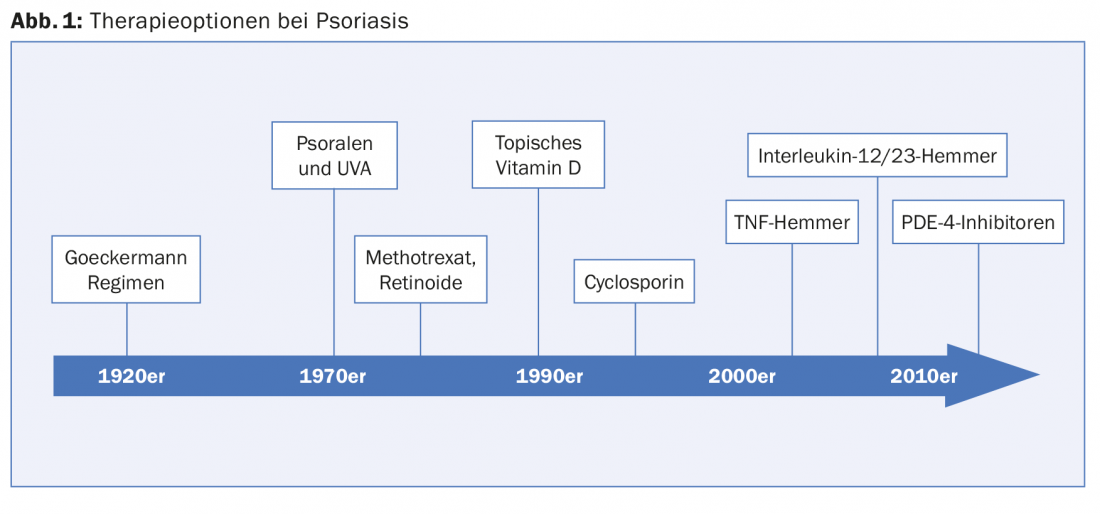The largest European dermatology meeting was once again the Congress of the European Academy of Dermatology and Venereology (EADV) in Copenhagen with more than 9500 participants. For 40 years, EADV has brought together the scientific interests of dermatologists, and in 2015, for the first time, patient associations were invited to participate. The experts are proud of the great progress that has been made in recent years, which is also advancing other medical disciplines. The explosion in the cost of new therapies is a cause for concern.
This year’s Nobel Prize in Medicine recognizes research on skin infectious diseases with William C. Campbell and Satoshi Omura. In turn, Nobel Prize winners in chemistry Tomas Lindahl, Paul Modrich and Aziz Sancar contributed to the understanding of skin cancer and aging with their work. “The skin has the advantage that you can look at it at any time,” explained Prof. Martin Röcken, MD, Tübingen, Germany, committee chairman of EADV Scientific Programming, at the press conference about the pioneering role of dermatology. Two of the four plenary lectures in Copenhagen were given by Swiss nationals: Prof. Lars French, MD, Zurich, spoke on autoimmune diseases of the skin and PD Thomas Kündig, MD, Zurich, presented the interleukin 1 family and its role in inflammatory skin diseases.
Enthusiasm in dermatooncology despite “therapy costs” as a problem child
By identifying essential factors in inflammatory skin diseases such as psoriasis and in oncogenesis, targeted drugs (e.g. inhibitors of IL-17 and IL-23) may also offer new options in inflammatory bowel disease, rheumatoid arthritis and multiple sclerosis. “The therapeutic progress in metastatic melanoma makes me quite enthusiastic as a physician, the patients live and feel healthy. Anti-PD-1 therapy can halt the progression of metastatic disease for more than 18 months, a new study has shown [1],” Prof. Röcken said. And the chances are good that patients with lung, bladder or kidney cancer can also benefit. Therapy costs of up to 250,000 euros per year, however, are prohibitive, he said. Since the basic research for many of these therapies was carried out in publicly funded research institutes, it should also be ensured that the innovations reach patients under acceptable conditions.
Favorite child “Networks” – strong together
Prof. Dr. med. Erwin Tschachler, Vienna, as current president of EADV, was proud that under his presidency the important closing of ranks with the newly founded worldwide federation of patient organizations has succeeded (www.globalskin.org). More than 60 groups presented themselves in the patient village, the way to the presentations led directly through the stands and the respective representatives were happy to answer questions. American Bill McCue, for example, has the rare condition pityriasis rubra pilaris (PRP) and is a founding member of the PRP Alliance (www.prpalliance.com). He was already invited to the University Hospital in Zurich to inform the physicians around Lisa Weibel, MD, who is caring for a PRP patient in childhood, about the clinical picture from the point of view of an affected person. “Patients want to be ambassadors, to inform, to advocate, and in doing so, help themselves and others,” McCue explained. Networked among themselves in the International Alliance of Dermatology Patient Organizations (IADPO), they will now carry out joint lobbying work, but also offer individual support, e.g. with legal issues.
Prof. Giuseppe Argenziano, MD, from Naples pointed out an interesting aspect of the use of new media. He had moved to screening photos of skin afflictions submitted by patients to determine whether or not a visit to the office was necessary. Thanks to this “prescreening,” he saves time for the cases that actually require a visit to the doctor. In the case of an insect bite or a progress check, the patient would no longer need to come.
“For me as a specialist, dermoscopy and the sharing of relevant images on the Internet are of increasing importance,” he shared. “We are moving from a clinical pathology-based diagnosis to a clinical image-based diagnosis.” On Facebook, he said, there is already a large group of dermatologists practicing “learning through swarm intelligence.” The 6000 members have already posted 8000 images and support each other in unclear cases with tips and suggestions on how they would proceed.
Problem child “body art” – side effects are underestimated
10% of the population in Europe are tattooed or have a piercing, among younger people it is already one third. The cult of ever-new types of body adornment as a means of self-expression continues unabated despite known risks, according to Prof. Christa de Cuyper, MD, Bruges [2]. The Tattoo Convention of EADV sets itself the goal to inform and warn. For example, the tattoo inks and permanent makeups may contain ingredients and chemicals that are not allowed in cosmetics. There is a lack of data, standards and norms regarding biokinetics and toxicity, phototoxicity, carcinogenic potential and metabolic conversion.
More than two-thirds of the “decorated” have early and/or late side effects. These range from infections with bacteria (staphylococci, streptococci, mycobacteria, pseudomonas), viruses (hepatitis, HIV) and fungi to allergic reactions and unsightly, unwanted scars. You can minimize this danger by working cleanly. But you can’t completely rule them out – even if you go to a sterile studio. Especially important after a piercing, scarring or tattooing procedure is good hygiene and disinfecting measures to prevent infection. Ointments that are too greasy can trigger an occlusion effect, which is unfavorable for wound healing. It is best not to use ointments on a freshly pierced tattoo, because bacteria can always be rubbed into the wound. Protection from UV light is extremely important, as sunlight can cause permanent brown discoloration. In scar research, the extracellular matrix and the role of proteinases are currently of interest. In normal wound healing, proteolysis is subject to strict control; if this is disturbed, wound healing disorders and excessive scarring are the result.

More than 20% later regret their decision and want to part with the jewelry pictures or metal particles again, according to the expert. But even “harmless” henna tattoos are not without consequences: Today, para-phenylenediamine is added to the henna, so that in the event of a contact allergy, problems can arise later when dyeing the hair, explained Prof. de Cuyper. Especially the red dye in tattoo inks is a big issue. The color pigments that are used come from industry and decompose in the skin. “It is not known today what will be a concern tomorrow,” the expert warned, calling for more consumer protection.
Favorite child “biologicals” – great progress in psoriasis
The ancient Egyptians, as recorded in the Papyrus Ebers, knew only urine, onion and sea salt as therapeutic agents for psoriatic skin lesions. Today, the situation is different: of 20 satellite symposia and three meet-the-expert sessions supported by industry at EADV, more than half addressed current aspects of new targeted therapy options for psoriasis. Prof. Kristian Reich, MD, SCIderm Research Institute and Dermatologikum Hamburg, Germany, showed the evolution that has taken place in psoriasis over the last hundred years (Fig. 1). “Interleukin blockade is the key; we are now learning from the drugs. With an infusion every two weeks, we make the neutrophils (Munro abscesses) in the lesions disappear [3],” he stated.
The list of targets and the drugs directed at them is rapidly growing and includes current:
- Anti-TNF alfa: etanercept, infliximab, adalimumab, golimumab, certolizumab
- Anti-IL-12/23p40: ustekinumab
- Anti-IL-17A: Secukinumab, Ixekizumab, Brodalumab
- Anti-IL23-p19: tildrakizumab, guselkumab, BI 6555066.
“The goal of therapy today is primarily quality of life. Patients want a PASI of 90 and a rapid effect,” Prof. Bruce Strober, MD, of Connecticut Health Center in Farmington, said at a Novartis-supported symposium. “I use antibodies every day, often in first-line when insurance pays,” he said of the importance of antibodies in his clinical practice. He has few more safety concerns: ustekinumab has been on the market for five years and has proven to be very safe. The new IL-17 inhibitors target the event even more centrally, are even more effective according to the data to date, and do so over a longer period of time and with less immunogenicity [4] (see posters 1727, 1749, 1812). Ixekizumab and brodalumab would currently have issues with the FDA because of suicide risk (six suicides in 6000 patients). Secukinumab is comparable to etanercept in this respect. “So far the confidence is high and in two years we will know more” concluded Prof. Strober.
Prof. Diamant Thaçi, MD, from Lübeck, Germany, addressed patient expectations and frequently asked questions. How long does a drug last? Does it also have an effect on nail psoriasis? Does pain on the palms of the hands and soles of the feet go away? Is it possible to stop the progression of the disease? When should you start new medications? How do they affect comorbidities? Prof. Thaçi recommended that the use of interleukin inhibitors should be based on the practices and guidelines of the respective country. The old drugs would continue to have their place (methotrexate, cyclosporine, acitretin), but he, too, expects biologicals to move up to the first line. In connection with biologic therapy (both anti-TNF-alpha inhibitors and the interleukin-12/23 inhibitor ustekinumab), attention should be paid to exacerbations of tuberculosis and, in the case of secukinumab, to fungal infections. “If a country has a high rate of tuberculosis, then all immunosuppressants should be tested for latent TB,” the experts said on this point.
Source: Congress of the European Academy of Dermatology and Venereology, October 7-11, 2015, Copenhagen.
Literature:
- Robert C, et al: Nivolumab in previously untreated melanoma without BRAF mutation. N Engl J Med 2015 Jan 22; 372(4): 320-330.
- De Cuyper C: Complications of cosmetic tattoos. Curr Probl Dermatol 2015; 48: 61-70.
- Reich K, et al: Evidence That a Neutrophil-Keratinocyte Crosstalk Is an Early Target of IL-17A Inhibition in Psoriasis. Exp Dermatol 2015 Jul; 24(7): 529-535.
- Thaci D, et al: Secukinumab is superior to ustekinumab in clearing skin of subjects with moderate to severe plaque psoriasis: CLEAR, a randomized controlled trial. Journal of the American Academy of Dermatology 2015; 73(3): 400-409.
DERMATOLOGY PRACTICE 2015; 25(6): 47-48











